
Facheiroa cephaliomelana is a species of plant in the family Cactaceae.
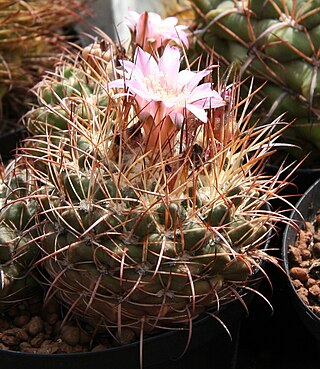
Neowerdermannia vorwerkii, also known as achakana, is a species of cactus from high altitudes in Bolivia and northern Argentina.

Gymnocalycium eurypleurum is a small "chin cactus" that is highly prized by cactus collectors and is known to be fairly easy to grow, albeit very slow

Gymnocalycium baldianum, the spider-cactus or dwarf chin cactus, is a species of flowering plant in the cactus family Cactaceae, native to the Catamarca Province in Argentina.

Gymnocalycium oenanthemum is a species of flowering plant in the family Cactaceae, endemic to Argentina. A slightly flattened sphere growing to 12 cm (4.7 in), it has 10–13 ribs, each containing a row of tubercles with radial spines. In summer it bears a wine-red or pink daisy-like flower.
Frailea gracillima is a species of Frailea from Brazil, Paraguay, and Uruguay.

Gymnocalycium monvillei is a species of Gymnocalycium from Argentina.

Gymnocalycium bruchii is a species of Gymnocalycium from Argentina.
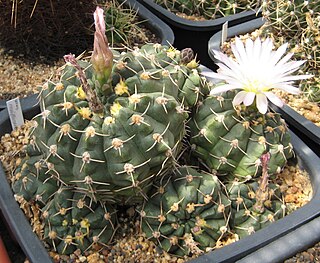
Gymnocalycium uruguayense is a species of Gymnocalycium from Brazil and Uruguay.

Gymnocalycium amerhauseri is a species of Gymnocalycium from Argentina.
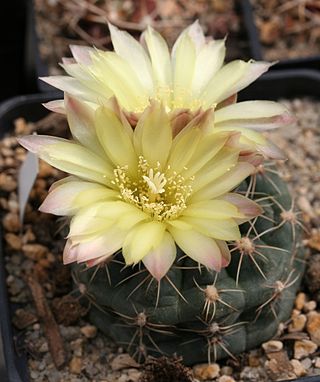
Gymnocalycium andreae is a species of Gymnocalycium from Argentina.
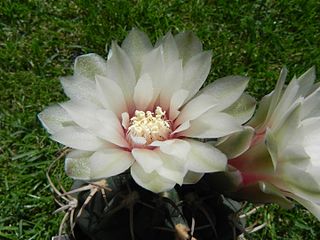
Gymnocalycium bayrianum is a species of Gymnocalycium from Argentina.
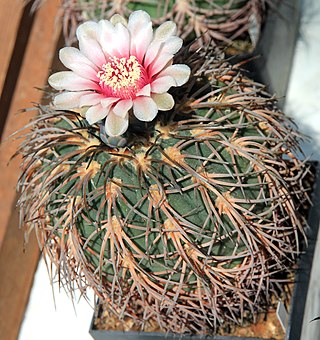
Gymnocalycium spegazzinii is a species of Gymnocalycium from Argentina and Bolivia named after the botanist C. L. Spegazzini.

Gymnocalycium ochoterenae is a species of Gymnocalycium from Argentina.
Lobivia pugionacantha, is a species of Lobivia found in Argentina and Bolivia. Lobivia is a genus of cacti.

Gymnocalycium mostii is a species of Gymnocalycium from Argentina.

Gymnocalycium nigriareolatum is a species of Gymnocalycium from Argentina.
Gymnocalycium angelae is a species of cactus in the genus Gymnocalycium, endemic to Argentina.

Gymnocalycium chacoense is a species of cactus in the genus Gymnocalycium, endemic to Bolivia.

Gymnocalycium hossei is a species of cactus in the genus Gymnocalycium, endemic to Bolivia.

















